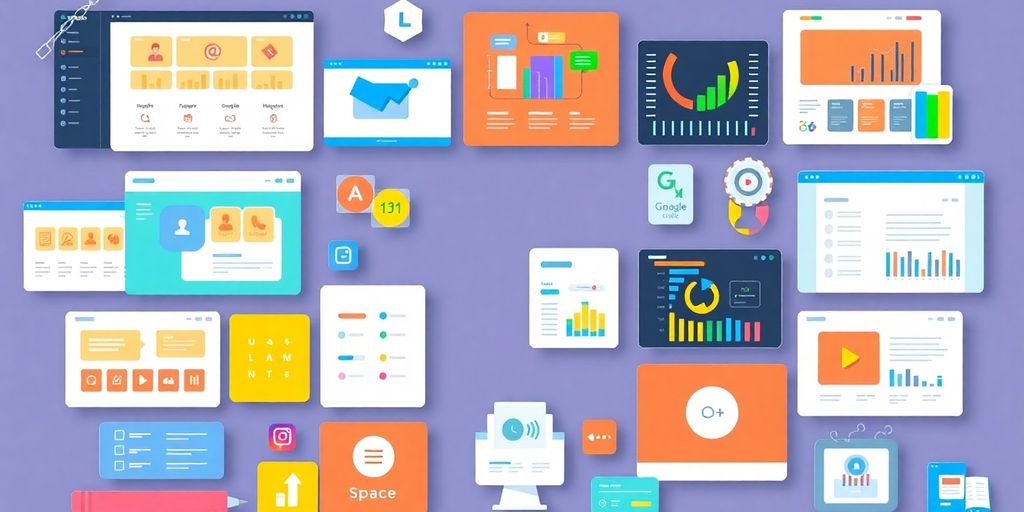ChatGPT Pulse: Your Daily Research Agent With Daily updates

You know how sometimes you wish your AI could just, like, *know* what you needed before you even asked? That’s kind of the idea behind ChatGPT Pulse. It’s this new thing from OpenAI that’s supposed to be like a personal research assistant, but instead of you having to dig around, it brings the info to you. Think of it as a daily briefing, but all about stuff *you* actually care about. I was pretty skeptical at first, because, who needs another thing to check? But after looking into it, it seems like it could actually be pretty useful for keeping up with things without feeling overwhelmed. Let’s break down what this ChatGPT Pulse thing is all about.
Key Takeaways
-
ChatGPT Pulse acts as a daily research agent, proactively delivering personalized updates based on your chat history, memory, and feedback.
-
It aims to reduce information overload by presenting curated updates in an easy-to-scan card format, refreshing once daily.
-
The feature integrates with other apps like Google Calendar and Gmail (with user permission) to provide more contextually relevant insights.
-
ChatGPT Pulse is part of a larger move towards AI agents that can take action on your behalf, evolving beyond simple reactive chatbots.
-
Users maintain control through feedback mechanisms like thumbs up/down on updates, history clearing, and data privacy settings.
Understanding ChatGPT Pulse
What is ChatGPT Pulse?
So, what exactly is ChatGPT Pulse? Think of it as your personal AI assistant that wakes up before you do. Instead of you having to ask it questions all the time, Pulse does the work overnight. It looks at what you’ve been talking about with ChatGPT, any notes it’s supposed to remember about you, and if you let it, your calendar and emails. Then, it puts together a quick rundown of things it thinks you’ll need to know for the day. It shows up as these neat little cards, making it easy to see what’s important without getting overwhelmed. It’s like getting a personalized briefing tailored just for your life, whether that’s prepping for a meeting or planning your weekend. It’s designed to be a proactive helper, not just another app to scroll through. This new approach aims to make ChatGPT feel more like a teammate who’s always got your back, ready with information and ideas before you even ask. It’s a big step towards making AI feel more integrated into our daily routines, offering insights that are actually relevant to what’s happening in your world. You can find out more about how it works on the official ChatGPT Pulse page.
How ChatGPT Pulse Works
Alright, let’s break down how this whole Pulse thing actually functions. It’s pretty neat, honestly. The system works by gathering information from a few key places. First, it taps into your past conversations with ChatGPT. If you’ve got the ‘memory’ feature turned on, it uses those stored details too. The really smart part is that you can also give it permission to look at your connected apps, like your Google Calendar or Gmail. This lets it see what’s coming up on your schedule or important emails. Based on all this data, ChatGPT Pulse does some research behind the scenes. It synthesizes this information to create a daily digest. This digest is presented in a series of visual cards, which are easy to scan. Each card might offer a suggestion, a reminder, or a piece of information relevant to your day. For example, if you have a run planned before a dinner, Pulse might suggest a route and even offer tips for transitioning smoothly. It’s all about providing timely, actionable insights without you having to hunt for them. The updates are designed to refresh once a day, so it’s not an endless stream of content.
The Core Concept of ChatGPT Pulse
The main idea behind ChatGPT Pulse is to shift AI from being purely reactive to being proactively helpful. Most of the time, we ask an AI a question, and it answers. Pulse flips that. It anticipates what you might need based on your history and upcoming events. It’s about providing context and suggestions before you even realize you need them. Imagine getting a heads-up about a friend’s birthday or a reminder to pack an umbrella because rain is expected during your commute. This isn’t about overwhelming you with data; it’s about delivering just the right bits of information at the right time. The goal is to make your day run a little smoother and help you stay on top of things without constant effort. It’s like having a personal assistant who’s always a step ahead, quietly making sure you’re prepared for whatever comes next. This proactive approach aims to reduce the mental load of managing daily tasks and information, making your interactions with AI more natural and beneficial.
Personalized Research on Autopilot
Let’s be honest, most of us are drowning in information. We’ve got emails, news alerts, social media pings – it’s a lot. ChatGPT Pulse aims to cut through that noise by acting like your personal research assistant, but one that works while you sleep. It’s designed to bring you updates that actually matter to you, without you having to constantly ask or search. The goal is to give you a focused start to your day, packed with relevant insights.
Tailored Updates for Your Interests
This is where Pulse really shines. It learns what you’re into by looking at your past conversations and, if you allow it, information from connected apps like your calendar or email. Think of it like this:
-
Learning Your Hobbies: If you’ve been chatting about training for a marathon, Pulse might bring you daily tips on running or nutrition.
-
Professional Development: Asking about a new software? Pulse could surface recent articles or tutorials related to it.
-
Personal Projects: Planning a trip? It might offer quick guides or local recommendations.
It’s not just about broad topics, either. You can even give it more specific instructions. For example, after selecting ‘unique experiences’ for travel, you could type in a request like, “Surprise me with hidden-gem bookstores.” The next day, you might get a card specifically about those bookstores in your destination.
The system gets smarter over time. A simple thumbs-up or thumbs-down on an update helps it understand what you like and don’t like, refining the content it shows you each day. It moves beyond generic advice to things that genuinely align with your personal goals and interests.
Connecting Apps for Smarter Insights
To make these updates even more useful, Pulse can connect with other apps you use. This is optional, of course, but it opens up some neat possibilities:
-
Calendar Integration: If you link your calendar, Pulse can remind you about upcoming events, like a friend’s birthday, and even suggest a restaurant nearby for a meeting.
-
Email Sync: Connecting your email could allow Pulse to pull information for things like upcoming dinner parties, helping with menu ideas or guest lists.
-
Contact Lists: This could help Pulse identify important dates or people you might need information about.
This connection means Pulse can offer more timely and practical suggestions. Instead of just general travel tips, it might suggest a specific cafe near the conference center where you have a meeting scheduled.
Daily Focus, Not Endless Scrolling
One of the best parts about Pulse is how it’s structured. The updates come once a day, usually in the morning, and they’re presented in a clean, card-like format. You can quickly scan them or click for more details.
-
Daily Briefing: It’s like a personalized morning newspaper, but focused on what matters to you.
-
Actionable Information: The updates are designed to give you just enough information to move forward with your day, not to keep you glued to a screen.
-
Temporary Updates: Unless you save them, the updates refresh daily, encouraging you to engage with the information and then move on.
This approach helps prevent information overload. You get a curated snapshot of what’s new and relevant, allowing you to stay informed without the constant distraction of endless scrolling through feeds.
The Evolution of ChatGPT Agents
It feels like just yesterday we were marveling at ChatGPT’s ability to chat, and now? It’s grown up. We’re talking about a whole new level of AI, where it’s not just responding to us, but actually doing things. This isn’t just a chatbot anymore; it’s becoming an agent, capable of thinking and acting on its own. Imagine an AI that can proactively pick and use different tools to get tasks done for you, almost like it has its own computer to work with. That’s the direction things are heading.
Unified Agentic System Explained
At the heart of this shift is something called a unified agentic system. Think of it as bringing together the best parts of previous AI advancements. You’ve got the ability to interact with websites, the skill to dig into information and put it all together, and of course, ChatGPT’s own smarts and conversational style. All these pieces are now working together in one package. This means ChatGPT can handle complex jobs from start to finish, using its own virtual computer to keep track of everything. It can switch between thinking and doing, all based on what you ask it to do. The real game-changer is that it can now take action on the web for you.
Operator and Deep Research Integration
Before this, tools like ‘Operator’ were good at clicking around on websites, while ‘Deep Research’ was great at analyzing text. But they had their limits. Operator couldn’t really get into deep analysis, and Deep Research couldn’t interact with websites to get fresh info. It was a bit like having two specialists who couldn’t quite work together. Now, those strengths are combined. ChatGPT can actively browse websites, click on things, filter results, and get more precise information. It’s like having one super-powered assistant that can both explore and analyze.
Taking Action on Your Behalf
This evolution means ChatGPT can now do things like:
-
Look at your calendar and give you a quick rundown of upcoming client meetings, pulling in recent news.
-
Plan out and even order ingredients for a meal.
-
Analyze competitors and put together a presentation slide deck.
It intelligently browses websites, filters what it finds, and can even run code. You get back editable documents like slideshows and spreadsheets summarizing its findings. You can connect apps like your email or GitHub, so it can find relevant information and use it in its responses. This allows it to work with your existing tools and data, making it a much more integrated part of your workflow. You can find out more about how these agents work by looking at how ChatGPT agents operate.
You’re always in charge, though. ChatGPT will ask for your okay before doing anything significant. You can also pause it, take over the browser yourself, or stop the task completely at any time. This keeps you in the driver’s seat, even as the AI takes on more complex work.
ChatGPT Pulse: A Proactive Assistant

Most AI tools out there still feel like glorified search engines. You ask a question, and it gives you an answer. Sure, that’s helpful, but it rarely seems to guess what I might need next. That’s why I was pretty intrigued when OpenAI rolled out ChatGPT Pulse for mobile Pro users. As someone who tries out pretty much every AI update that pops up, I had to give it a spin. And honestly? It’s the first time ChatGPT has felt less like a chatbot and more like a quiet teammate who actually pays attention.
Anticipating User Needs
Pulse isn’t just another chat window; it’s a daily digest of personalized insights that ChatGPT puts together for you overnight. It pulls information from your past conversations, your memory (if you’ve got that turned on), and optionally, your Google Calendar or Gmail. The result is a clean, card-based feed each morning with things like “London travel tips” or “quick trail run ideas”—exactly the kind of small bits of guidance I’d normally have to spend time searching for myself. It’s about getting you the information you need before you even realize you need it.
The real breakthrough will come when AI assistants understand your goals and help you reach them without waiting for you to prompt them.
When I connected my calendar (which is totally optional, by the way), within a couple of days, Pulse reminded me about a friend’s birthday and even suggested a nice restaurant near an upcoming meeting I had in Brooklyn. It wasn’t exactly earth-shattering, but it was definitely convenient. And that’s kind of the whole point: it’s not trying to blow your mind—it’s trying to help you get unstuck.
Beyond Reactive Chatbots
What really got me hooked was how Pulse asks you what you want. One morning, it presented me with: “When you’re traveling, what’s your preference?” with options like “one-of-a-kind experiences” (which I picked) or “affordable options.” Below that, there was a text box that said, “Share anything…” so I typed, “Surprise me with hidden-gem bookstores.” The next day? A card titled “3 Secret Bookshops in Lisbon” popped up. This isn’t just personalization; it feels like a genuine collaboration. For someone like me, who has spent ages sifting through AI noise to find useful signals, this shift is significant. Instead of constantly typing prompts, I’m now curating. A simple thumbs-up or thumbs-down trains the system. Over time, it stops showing me generic productivity tips and starts suggesting sci-fi novel recommendations or recovery exercises for my weekend runs. This proactive approach means you get information that’s truly relevant to your life, making ChatGPT Pulse feel more like a personal assistant and less like a tool you have to manage.
The Future of AI Companionship
This evolution marks a significant step towards AI that doesn’t just respond but actively assists. Imagine an AI that learns your routines, understands your goals, and proactively provides the information or tools you need to achieve them. This could range from:
-
Suggesting workout routines based on your fitness goals and available time.
-
Providing summaries of industry news relevant to your work before your day even begins.
-
Offering recipe ideas based on ingredients you have and dietary preferences.
This shift from reactive queries to proactive support is paving the way for AI companions that integrate more naturally into our daily lives, anticipating needs and simplifying complex tasks. It’s about making AI a true partner, not just a digital assistant. The goal is to have AI that can handle requests like “look at my calendar and brief me on upcoming client meetings based on recent news,” which is a capability that is becoming more accessible with advanced agent features.
|
Feature Category |
Example Use Case |
|---|---|
|
Personal Life |
Birthday reminders, restaurant suggestions |
|
Professional |
Meeting briefs, industry news summaries |
|
Health & Fitness |
Workout suggestions, recovery tips |
User Control and Feedback Mechanisms
It’s easy to feel like AI is just doing its own thing, but with ChatGPT Pulse, you’re definitely in the driver’s seat. The whole point is to make your life easier, not to take over. That means you get to decide what it pays attention to and how it helps you out.
Curating Your Personal Feed
Think of your Pulse feed like a personalized newspaper. You get to pick which sections are most interesting to you. This isn’t just about random articles; it’s about information that actually matters for your day-to-day. You can tell Pulse what topics you’re curious about, what projects you’re working on, or even just what kind of mood you’re in. It’s all about tailoring the updates so they’re relevant and useful, cutting down on the noise.
-
Specify Interests: Directly tell Pulse what subjects you want to follow.
-
Project Focus: Link Pulse to ongoing projects so it can provide related updates.
-
Daily Themes: Set a general theme for the day, like ‘productivity’ or ‘wellness’.
The Role of User Feedback
Your input is super important here. If Pulse gets something wrong, or if an update just isn’t hitting the mark, you can tell it. This feedback loop is what makes Pulse smarter and more aligned with your needs over time. It’s not just about getting an answer; it’s about refining the AI’s understanding of what you actually want. The system learns from your corrections, making future suggestions more accurate. It’s like training a helpful assistant – the more you guide it, the better it gets.
The system adapts quickly based on direct feedback. This responsiveness is key, treating user input like fuel for improvement rather than an afterthought. It’s how the AI learns to align suggestions with what you’re actually working on.
Maintaining Control Over Your Data
When you connect apps like your calendar or email, you’re giving Pulse access to your information. But you’re always asked for permission first. You can see what data Pulse is using and decide if you want to keep those connections active. It’s important to feel secure about your personal information, and Pulse is designed with that in mind. You can easily review and adjust these permissions whenever you need to. For instance, if you’re concerned about privacy, you can disable connectors when they’re not needed, giving you direct control over your data.
Here’s a quick look at how permissions work:
-
Initial Connection: When you first link an app, Pulse will clearly state what information it needs.
-
Permission Prompts: For significant actions or accessing sensitive data, Pulse will ask for your explicit confirmation.
-
Review and Adjust: You can visit your settings at any time to see connected apps and manage their permissions.
-
Task Interruption: You always have the option to pause or stop a task if you feel it’s going in the wrong direction.
ChatGPT Pulse in Real-World Scenarios

So, what does this all mean for you and me? It’s not just about fancy tech talk; it’s about making our lives a little easier, both at work and at home. Think of it as having a super-organized assistant who’s always on top of things.
Professional Task Automation
At work, this can be a game-changer. Imagine you’ve got a bunch of meeting notes or maybe some data from a spreadsheet that you need to turn into a presentation. Instead of spending hours fiddling with formatting and copying text, you can just ask ChatGPT Pulse to handle it. It can take those raw notes and whip up a presentation with editable slides, saving you a ton of time. It can also help with things like scheduling meetings, keeping track of expenses, or even summarizing your inbox for the day. It’s like having a personal secretary who never sleeps.
Here’s a quick look at what it can do:
-
Convert meeting notes or data into editable presentations.
-
Automate expense reporting and tracking.
-
Summarize daily emails and identify urgent items.
-
Schedule recurring reports, like weekly performance metrics.
The idea is to free you up from the tedious, repetitive stuff so you can focus on the bigger picture and the tasks that actually require your unique skills and judgment.
Personal Life Enhancements
It’s not just for the office, though. In your personal life, ChatGPT Pulse can help with planning and organization too. Need to plan a dinner party? It can help you brainstorm menu ideas, find recipes, and even create a shopping list. Planning a trip? It can put together an itinerary, suggest places to stay, and even help with booking. It can also help you find specialists and schedule appointments, like a dentist or a mechanic. It’s about taking the mental load off everyday tasks.
For instance, you could ask it to:
-
Plan a weekend getaway, including travel and accommodation suggestions.
-
Organize a birthday party, from guest lists to decorations.
-
Find and book appointments with local service providers.
-
Generate weekly meal plans based on your dietary preferences.
Navigating Complex Workflows
Sometimes, tasks aren’t just one simple step. They involve multiple actions, checking information, and making decisions along the way. This is where the agentic capabilities really shine. ChatGPT Pulse can handle these multi-step processes from start to finish. For example, you could ask it to research a topic, synthesize the findings, and then create a report. It will go out, find the information, process it, and present it back to you in a usable format. You can even interrupt it mid-task if you need to change direction or provide more details, and it will adjust accordingly. It’s designed to be interactive, so you’re always in the loop and in control. This makes it a powerful tool for tackling projects that would otherwise be overwhelming. You can find some interesting podcasts about artificial intelligence that discuss these kinds of advancements.
Wrapping Up: Your New AI Assistant
So, that’s the lowdown on ChatGPT Pulse and its agent capabilities. It’s pretty neat how it’s trying to be more than just a tool you ask questions to. Instead, it’s aiming to be more like a helpful sidekick, figuring out what you might need before you even ask. Think of it as your personal research helper that learns what you’re into and brings you updates each day. It’s still pretty new, and like anything, it’ll probably get better with time and with our feedback. If you’re looking for a way to cut down on endless searching and get more focused information, this might be worth checking out. It’s a step towards AI that feels a bit more proactive and less like just another search bar.
Frequently Asked Questions
What exactly is ChatGPT Pulse?
Think of ChatGPT Pulse as your personal news reporter that works overnight. It checks out what you’ve been talking about with ChatGPT, remembers your interests, and even looks at your connected apps like your calendar. Then, it puts together a special report just for you, showing up in the morning with updates on things you care about. It’s like getting a quick briefing tailored to your life, so you don’t have to search for everything yourself.
How does ChatGPT Pulse know what I like?
ChatGPT Pulse learns what you’re interested in by looking at your past chats, any feedback you’ve given, and if you choose to connect them, your calendar and email. It uses this information to guess what new things you might want to know about. You can also tell it directly what you like or don’t like by giving updates a thumbs up or down, which helps it get even better at picking things for you.
Is ChatGPT Pulse always on and showing me things?
No, it’s not like a social media feed that’s always going. Pulse gives you a fresh set of updates once a day. These updates are meant to be quick and easy to look at. The idea is to give you just enough information to start your day, not to keep you scrolling for hours. If you don’t save them, they disappear after a while.
Can ChatGPT Pulse do things for me, like book appointments?
Yes, a newer version of ChatGPT, called ChatGPT Agent, can do more than just give information. It can actually take actions for you, like planning a trip, buying groceries, or creating a presentation. It uses its own virtual computer to handle these tasks from start to finish. You’re still in charge, though, and it will ask for your permission before doing anything important.
Do I have to share all my personal information for Pulse to work?
You have a lot of control over what you share. Connecting apps like your calendar or email is optional. If you do connect them, ChatGPT will ask for your okay to look at them. You can also clear your chat history and feedback whenever you want. OpenAI says your Pulse information is private between you and ChatGPT, and they have safety measures in place.
What’s the difference between ChatGPT Pulse and the regular ChatGPT?
Regular ChatGPT is like a helpful assistant you ask questions to. You have to tell it what you need. ChatGPT Pulse is different because it tries to guess what you might need to know *before* you ask. It proactively brings you updates based on what it thinks you’ll find interesting, making it feel more like a smart partner that anticipates your needs rather than just a tool you use when you have a question.








Responses